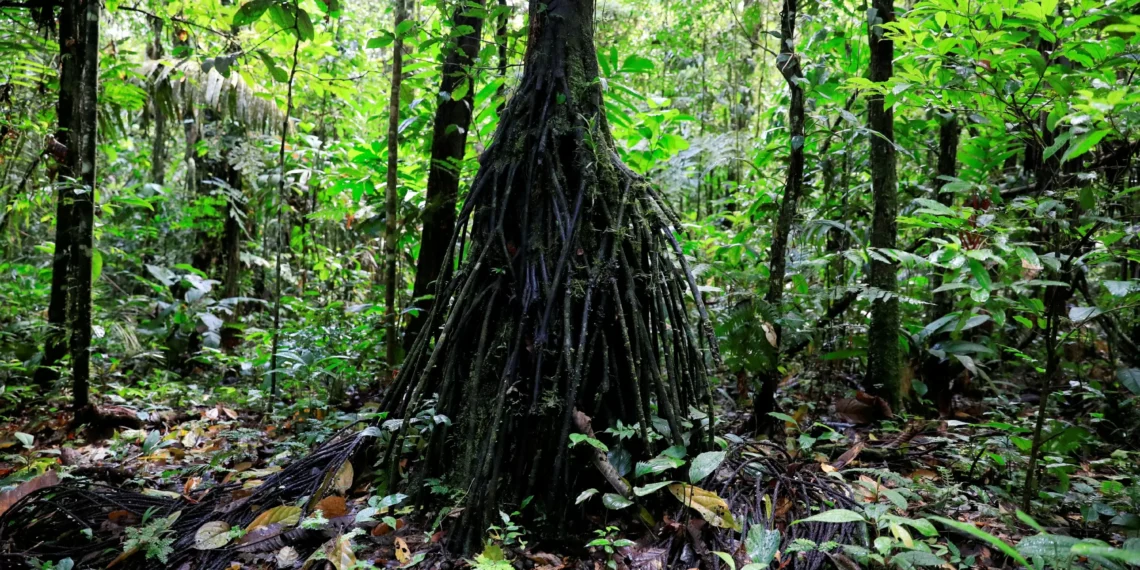The Amazon rainforest, often referred to as the “lungs of the Earth”, has been a subject of great concern for environmentalists and nature lovers all over the world. Its vast expanse of lush greenery and diverse wildlife make it one of the most important and precious ecosystems on our planet. However, recent reports have revealed that the already threatened Amazon rainforest in Brazil has suffered its highest number of fires in 17 years throughout 2024.
According to data published by the government-run National Institute for Space Research (INPE), there were a total of 103,000 fires in the Amazon region in 2024, which is a 43% increase from the previous year. This alarming statistic has raised serious concerns about the future of the Amazon and its impact on the global climate.
The Amazon rainforest, which covers an area of 5.5 million square kilometers, is home to a staggering number of plant and animal species. It is estimated that the Amazon is home to one-tenth of all known species on Earth. The forest also plays a crucial role in regulating the Earth’s climate by absorbing large amounts of carbon dioxide and releasing oxygen into the atmosphere. The destruction of the Amazon rainforest would not only lead to the loss of countless species but also have a devastating impact on the global climate.
The main cause of the fires in the Amazon is deforestation, primarily for agricultural purposes. The demand for land for cattle ranching and soybean production has led to large-scale clearing of the forest. This, coupled with the effects of climate change, has made the Amazon more prone to fires. The rising temperatures and prolonged periods of drought have created ideal conditions for the fires to spread rapidly.
The Brazilian government has been criticized for its lack of action in protecting the Amazon. In 2024, the government passed a new forestry code that weakened environmental protections and made it easier for farmers to clear land for agriculture. This move has been met with widespread criticism from environmentalists and indigenous communities who depend on the forest for their livelihoods.
However, amidst all the negative news, there is still hope for the Amazon rainforest. In recent years, there has been a growing awareness about the importance of preserving the Amazon and the need for urgent action. The international community has also stepped up its efforts to protect the forest, with many countries pledging financial aid and resources to combat deforestation.
The Brazilian government has also taken some steps to address the issue. In 2024, they launched the “Green Brazil” program, which aims to reduce deforestation in the Amazon by 90% by 2025. The program includes measures such as increasing surveillance and enforcement, promoting sustainable land use practices, and providing financial incentives for farmers to preserve the forest.
Moreover, the Amazon rainforest also has a powerful ally in the form of technology. In recent years, satellite monitoring and other advanced technologies have been used to detect and track deforestation in the Amazon. This has not only helped in identifying areas that are at risk of fires but also in holding accountable those who are responsible for the destruction of the forest.
It is also important to note that the fires in the Amazon are not just a problem for Brazil, but for the entire world. The Amazon rainforest is a global asset and its preservation should be a collective effort. It is crucial for all countries to come together and take action to protect this vital ecosystem.
In conclusion, while the news of the highest number of fires in the Amazon in 17 years is certainly concerning, it should also serve as a wake-up call for all of us. We cannot afford to lose the Amazon rainforest, and it is our responsibility to take action now. The future of our planet and the generations to come depends on it. Let us all join hands and work towards preserving this beautiful and irreplaceable treasure that is the Amazon rainforest.






